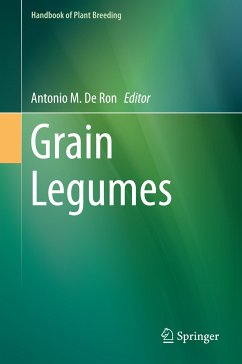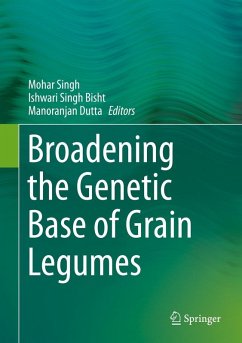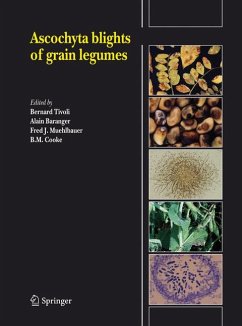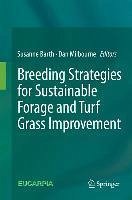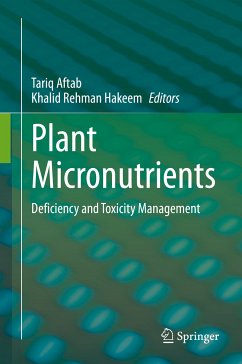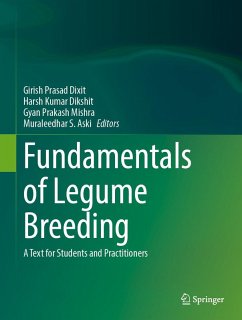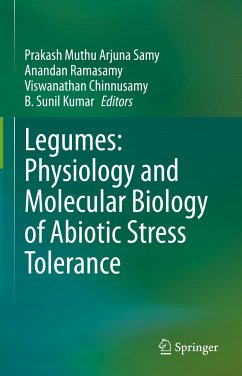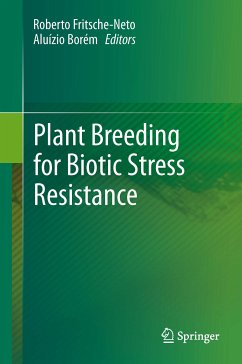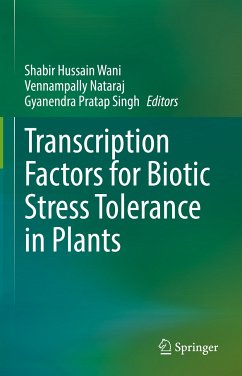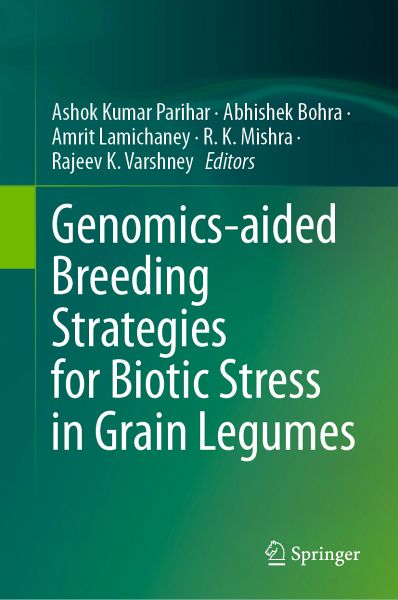
Genomics-aided Breeding Strategies for Biotic Stress in Grain Legumes (eBook, PDF)
Versandkostenfrei!
Sofort per Download lieferbar
160,95 €
inkl. MwSt.
Weitere Ausgaben:

PAYBACK Punkte
80 °P sammeln!
This contributed volume explores the latest breakthroughs in genetic and genomic resources for enhancing biotic stress responses in grain legumes - including minor ones. It covers the advances made to date, including gene identification, transcriptomics, proteomics, transgenics, genome editing, genomic selection, epigenetic breeding, and speed breeding related to different biotic stresses. Authored by crop-specific experts, the chapters in this book are essential resources for those directly involved in improving grain legume crops.Legumes play a vital role in ensuring food and nutritional sec...
This contributed volume explores the latest breakthroughs in genetic and genomic resources for enhancing biotic stress responses in grain legumes - including minor ones. It covers the advances made to date, including gene identification, transcriptomics, proteomics, transgenics, genome editing, genomic selection, epigenetic breeding, and speed breeding related to different biotic stresses. Authored by crop-specific experts, the chapters in this book are essential resources for those directly involved in improving grain legume crops.
Legumes play a vital role in ensuring food and nutritional security, enhancing soil quality, and promoting environmental sustainability. Rich in protein, they are essential in preventing hunger and malnutrition while adding to dietary diversity. However, as these crops are commonly grown in marginal lands with poor inputs, they are highly susceptible to biotic stresses such as diseases and pests, which can cause significant yield losses. This book consolidates all available knowledge about genetic and genomic aspects of biotic stress responses in various grain legumes.
It is a must-have resource for all stakeholders involved in grain legume improvement. Whether you are a breeder, pathologist, biotechnologist, seed production specialist, market manager, graduate or post-graduate student, or any other industry professional, this book serves as an excellent guide to help you stay at the forefront of grain legume improvement.
Legumes play a vital role in ensuring food and nutritional security, enhancing soil quality, and promoting environmental sustainability. Rich in protein, they are essential in preventing hunger and malnutrition while adding to dietary diversity. However, as these crops are commonly grown in marginal lands with poor inputs, they are highly susceptible to biotic stresses such as diseases and pests, which can cause significant yield losses. This book consolidates all available knowledge about genetic and genomic aspects of biotic stress responses in various grain legumes.
It is a must-have resource for all stakeholders involved in grain legume improvement. Whether you are a breeder, pathologist, biotechnologist, seed production specialist, market manager, graduate or post-graduate student, or any other industry professional, this book serves as an excellent guide to help you stay at the forefront of grain legume improvement.
Dieser Download kann aus rechtlichen Gründen nur mit Rechnungsadresse in A, B, BG, CY, CZ, D, DK, EW, E, FIN, F, GR, HR, H, IRL, I, LT, L, LR, M, NL, PL, P, R, S, SLO, SK ausgeliefert werden.




